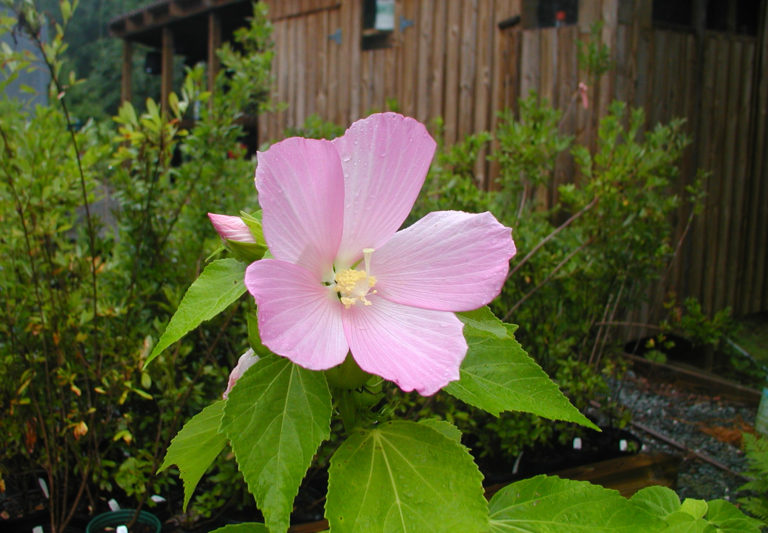This plant is not currently for sale. This is an archive page preserved for informational use.
There is disagreement and confusion about whether Hibiscus moscheutos and Hibiscus palustris constitute separate species, subspecies, or varieties, and we are not in a position to clarify! We are proceeding with propagating and selling the form with the clear (no maroon throat) pink flowers, and ovate, pointed leaves occasionally 3-lobed (as compared to ssp moscheutos, which has mostly white flowers with reddish-purple centers and lower leaves that are often three-lobed). This Rosemallow palustris is a very showy, vigorous herbaceous perennial 6-7′ tall occurring on edges of swamp forests in the piedmont, coastal plane and mountains of NC. Flowers range from pure white to to pure deep pink with a prominent staminate column and interesting fruits. Flowers are axillary, borne along the stems. Rosemallow palustris grows very well in sunny, moist- to-wet locations but also in upland garden sites. It attracts bees and Ruby-throated Hummingbirds. The USDA distribution map linked below is for H. moscheutos.

